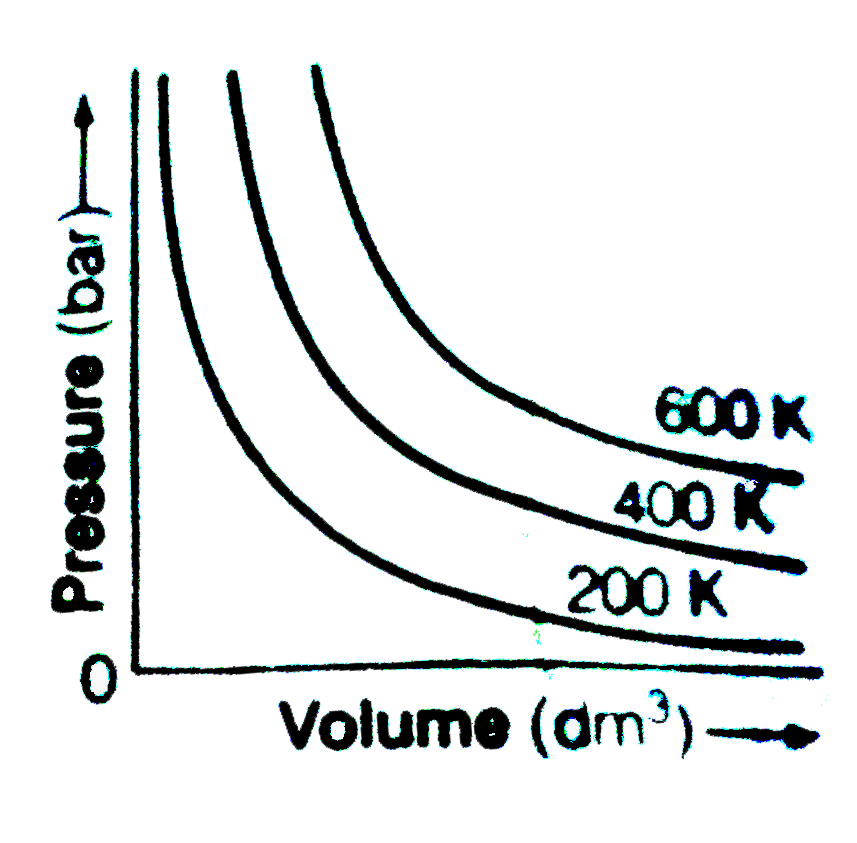For a reversible system at a constant temperature, the value of Kc increases if the concentrations are changed at equilibrium.
To determine whether the statement "For a reversible system at a constant temperature, the value of Kc increases if the concentrations are changed at equilibrium" is true or false, we need to analyze the concept of equilibrium and the equilibrium constant (Kc).
1. Understanding Kc:
- Kc is the equilibrium constant for a reversible reaction at a given temperature. It is defined as the ratio of the concentrations of products to the concentrations of reactants, each raised to the power of their respective coefficients in the balanced equation.
- For a general reaction:
aA+bB⇌cC+dD
The expression for Kc is:
Kc=(C)c(D)d(A)a(B)b
2. Effect of Concentration Changes:
- According to Le Chatelier's principle, if a system at equilibrium is disturbed by changing the concentration of reactants or products, the system will shift in the direction that counteracts the change.
- For example, if we increase the concentration of a product (C or D), the equilibrium will shift to the left (towards the reactants) to reduce the concentration of the added product.
3. Kc and Temperature:
- It is crucial to note that Kc is only dependent on the temperature of the system. It does not change with the concentrations of reactants or products.
- Therefore, even if we change the concentrations of the reactants or products, the value of Kc remains constant as long as the temperature remains unchanged.
4. Conclusion:
- Since Kc does not change with the concentration changes at equilibrium, the statement "the value of Kc increases if the concentrations are changed at equilibrium" is false.
Final Answer:
The statement is false. The value of Kc does not increase with changes in concentrations at equilibrium; it remains constant at a given temperature.
- Kc is the equilibrium constant for a reversible reaction at a given temperature. It is defined as the ratio of the concentrations of products to the concentrations of reactants, each raised to the power of their respective coefficients in the balanced equation.
- For a general reaction:
aA+bB⇌cC+dD
The expression for Kc is:
Kc=(C)c(D)d(A)a(B)b
- According to Le Chatelier's principle, if a system at equilibrium is disturbed by changing the concentration of reactants or products, the system will shift in the direction that counteracts the change.
- For example, if we increase the concentration of a product (C or D), the equilibrium will shift to the left (towards the reactants) to reduce the concentration of the added product.
- It is crucial to note that Kc is only dependent on the temperature of the system. It does not change with the concentrations of reactants or products.
- Therefore, even if we change the concentrations of the reactants or products, the value of Kc remains constant as long as the temperature remains unchanged.
- Since Kc does not change with the concentration changes at equilibrium, the statement "the value of Kc increases if the concentrations are changed at equilibrium" is false.
The statement is false. The value of Kc does not increase with changes in concentrations at equilibrium; it remains constant at a given temperature.
Topper's Solved these Questions
- CHEMICAL EQUILIBRIUMBOOK - CENGAGE CHEMISTRY ENGLISHCHAPTER - CHEMICAL EQUILIBRIUMEXERCISE - Archives (Multiple Correct)
6 Videos
- CHEMICAL EQUILIBRIUMBOOK - CENGAGE CHEMISTRY ENGLISHCHAPTER - CHEMICAL EQUILIBRIUMEXERCISE - Archives (Single Correct)
9 Videos
- CHEMICAL EQUILIBRIUMBOOK - CENGAGE CHEMISTRY ENGLISHCHAPTER - CHEMICAL EQUILIBRIUMEXERCISE - Exercises (Fill In The Blanks)
35 Videos
- CHEMICAL BONDING AND MOLECULAR STRUCTUREBOOK - CENGAGE CHEMISTRY ENGLISHCHAPTER - CHEMICAL BONDING AND MOLECULAR STRUCTUREEXERCISE - Archives Subjective
15 Videos
- CLASSIFICATION AND NOMENCLATURE OF ORGANIC COMPOUNDSBOOK - CENGAGE CHEMISTRY ENGLISHCHAPTER - CLASSIFICATION AND NOMENCLATURE OF ORGANIC COMPOUNDSEXERCISE - Analytical and Descriptive Type
3 Videos
Similar Questions
For any reversible reaction. If increases concentration of reactants. Then effect on equilibruim constant:
View SolutionIn an equilibrium A+B⇔C+D, A and B are mixed in vesel at temperature T. The initial concentration of A was twice the initial concentration of B. After the equilibrium has reaches, concentration of C was thrice the equilibrium concentration of B. Calculate Kc.
View SolutionIf temperature of the system remains constant during the course of change, the change is
View SolutionThe change in the magnitude of the volume of an ideal gas when a small additional pressure ΔP is applied at a constant temperature, is the same as the change when the temperature is reduced by a small quantity ΔT at constant pressure. The initial temperature and pressure of the gas were 300 K and 2 atm. respectively. If |ΔT|=C|ΔP| then value of C in (K/atm) is __________.
View SolutionFor a reversible system at equilibrium, which of the following is correct
View SolutionAssertion (A) : Greater the value of K, more is the fraction of initial concentration of reactants converted to products at equilibrium.
Reason (R) : The value of K depends on the initial concentration of reactants.
View SolutionFor a given reversible reaction at a fixed temperature, equilibrium constants Kp and Kc are related by ………
View SolutionA : Increasing the concentration of H2 will increases
magnitude of equilibrium constant of the reaction
H2+I2⇔2HI
R: Value of Kc depends upon the concentration of reactants and products taken.
View SolutionAssertion (A) : The value of K increases with increase in temperature in case of endothermic reaction
Reason (R) : The increase in temperature shifts the equilibrium in the backward direction in case of exothermic reaction.
View SolutionThe variation of pressure with volume of the gas at different temperatures can be graphically represented as shown in figure. On the basis of this graph answer the following question.
(i) How will the volume of a gas change if its pressure is increased at constant temperature ?
(ii) At a constant pressure, how will the volume of a gas change if the temperature is increased from 200 K to 400 K ?

View Solution
